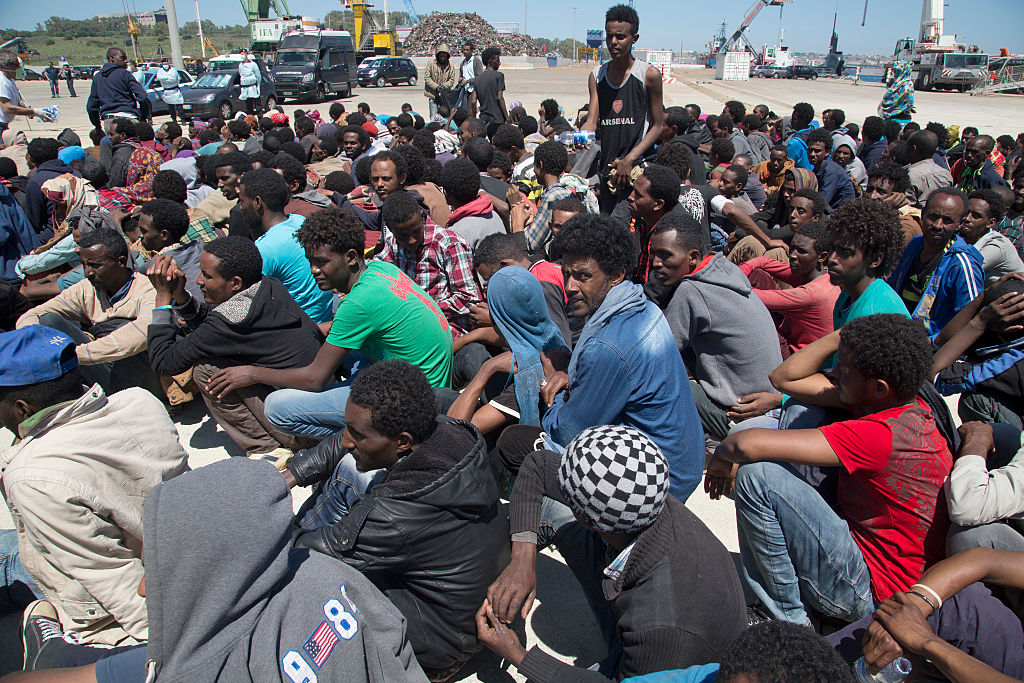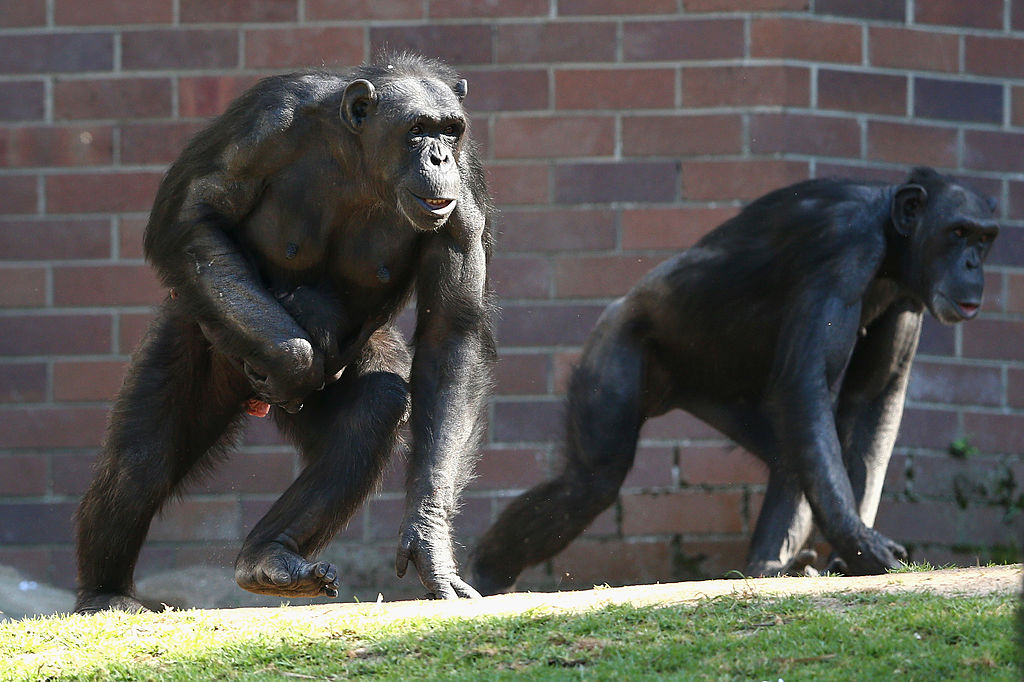The Great Barrier Reef is being eaten by gigantic Crown of Thorns starfish that, extruding their stomachs inside out, coat the poor coral with corrosive acids and digest it where it lies. It’s election time in Ireland, so the Irish people (and their many hundreds of thousands of guests) know exactly how the Great Barrier Reef feels, as they are bombarded with lies and coated with false promises while the country’s political starfish dissolve what remains of Ireland’s identity.
Yet apparently, Ireland is the model advertisement for life in the EU, a multicultural paradise with clean air, washed by free, energy-giving winds, with a young and vibrant population, a booming economy, a vast balance-of-payments surplus and wall-to-wall happiness guaranteed for all.
Instead, it is a surreal dystopia, in which all the metrics of success and happiness seem to be present, but the outcome is massive frustration and anger at the state’s inability to cope with the consequences of the state’s own ambitions. And those failings are made inevitable by the absurd terms of EU membership, especially the free and unhindered population movement across the entire bloc. This circus has been turned into a demographic charivari by the virtually autonomous and extra-legal rulings of European Court of Human Rights, which have made the expulsion of illegal immigrants almost impossible. Real figures are hard to come by because official statistics deliberately try to cloud the numbers of immigrants in Ireland, but allowing for children born of immigrants, roughly 25 per cent of the Irish population today is of foreign stock.
All countries have an immigration policy, either their own or that chosen by immigrants. Ireland has the latter, while efficient planning does not seem to be an innately Irish virtue. This has been an endemic characteristic of the Irish state since independence in 1922 but has been made quite spectacular by membership of the EU. Irish planners now not merely must prepare for the relatively foreseeable consequences of Irish population growth, but also for the entirely unforeseeable decision-making of hundreds of millions of Europeans who are now free to migrate to Ireland. Planning for this is rather like asking Joe Biden to land a plane in fog while calculating the value of π to five decimal places and humming a Bach motet.
The most obvious victim is housing, which in Dublin is probably the most expensive of any European capital, meaning that “children” often remain living home well into their thirties. The alternative is life in a remote suburb, which, apart from a few lucky areas, is probably connected to the rest of the world by a fabulously inept state-run public transport system in which the most accurate timetable is a calendar.
But it is the Irish healthcare system that attracts most hostile comment, of which the National Children’s Hospital is now the showpiece. When the first brick was laid, its budget was €650 million. As building proceeded, its cost rose to €2 billion and now tops €2.2 billion, though it will probably hit €3 billion before the first child is admitted, nearly thirty years after the proposal was first mooted. The hospital is in the very heart of Dublin, where the air is a cocktail of carbon monoxide and aromatic hydrocarbons from the main road from the country into the city centre. The congestion there is what you’d probably get if you imposed Tokyo’s traffic-lights on Manhattan’s street-plan. Yet after over two decades and probably three billion euros, the hospital will add just four more beds to the pre-existing children’s hospital facilities in a population that has meanwhile grown by some 40 per cent.
Likewise, Dublin’s plan for a metro to link the city centre to the airport: first mooted six years ago when the price was €3 billion, scheduled completion date, 2027, but now without a single sod ever being turned, its cost is “estimated” at €9 billion, a figure as meaningless as a Soviet plan to cultivate oyster-beds in earth-orbit.
In short, this is not a society that can be entrusted with project management of any kind – but because the EU has tolerated Ireland’s corporation tax-regime, and the population is English-speaking, it has become a haven for US companies selling into the EU, as well as running a vast but ill-disguised global Ponzi scheme for cheating other countries of tax-revenues. How long can this last? How long does any fraudulent scheme go on for, especially when a starfish called Trump can detect the tasty fragrance of the EU’s Ponzi coral that is Ireland?
In the meantime, the Irish government is inhaling corporation taxes from the offshore companies that have settled in its semi-criminal fiscal jurisdiction. From €4.6 billion in 2014, the corporation tax-take has risen to €37 billion, a windfall that has allowed Ireland’s political parties to embark upon the usual Auction of Insanity to buy their way into government. Being presented with an analysis of foreign political parties and what they supposedly stand for is rather like reading a description of quadrilateral equations in Turkish, so suffice to say that all main parties say pretty much the same thing: they love the EU and will spend billions they haven’t got on give-aways. The problem of course is that the more they give away, and the more jobs they create, the more immigrants will flood into the country to avail of the coral.
Meanwhile, well-paid civil servants still work a three-day week, as if Covid were harpooning any government employee who put his or her nose out of the front door on a Monday or a Friday, as retired public servants draw their pensions from current account, rather than from a pension fund. In other words, this is almost a cargo-cult society, with corporation taxes performing the function of the aircraft miraculously arriving in the South Sea islands bearing bounteous goods from the gods above to enchant naïve natives.
The Irish version of this cargo cult remains curiously – almost obsessively – untroubled by what might happen to Ireland if Trump comes down heavily against Ireland’s tax regime and causes Apple, Facebook, Google, Pfizer and Microsoft to relocate to the rustbelts of Ohio and Pennsylvania. (He probably won’t, but that’s another question). Most main parties have each promised to spend some €50 billion they haven’t got on projects that will only accentuate Ireland’s problems. The most outstandingly absurd is from the IRA’s political wing Sinn Fein, which plans to spend €83 billion it hasn’t got, and certainly will never get if Trump has his way, because it has been the most vituperative opponent of Trump’s policies.
This is before we approach what the parties intend to do about “global warming,” as if this were within their gift. It is not, any more than are the orbits of Saturn’s moons, but nonetheless the Irish political parties and their journalistic hangers-on bedazzle themselves (but nobody else) with fairy-stories of how Ireland is going to be the “Qatar of Europe” with its wind-power. While the Green Party boasted that their energy policies had caused a 7 per cent drop in Ireland’s emissions of greenhouse gases, the reality was that the reduction was caused by importing electricity from Britain and France. Bizarrely, greenhouse gas emissions are counted against the creators of the electricity rather than their users. On one glorious day, November 12, the sources of Irish-consumed electricity were as follows: wind, 2.83 per cent, coal, 2.92 per cent, imported through inter-connecters,16.8 per cent and gas, 75.6 per cent.
Of course, the Green Party fought tooth and nail against Ireland’s exploitation of the country’s small gas-fields, and (also) of course Ireland’s coal is imported. If Ireland had depended on its much-vaunted wind this evil month, Ireland Inc would have gone out of business, and cannibalism would probably be back in fashion. Meanwhile, Microsoft and Facebook and friends would have skedaddled to a more favourable place to do business, such as the Falklands, where boiled penguin is probably the energy-staple, and thus far more reliable than Irish wind, in every sense. But Ireland’s problems in this regard are just a different version of the world’s as witnessed by the recent farce of COP 29, as well as Sweden’s Northvolt car battery company going flat, with €5.6 billion in the red.
The larger but terrifying truths about the reality of Ireland should have appeared in the election debates, whereas they were totally absent, as the Irish political and media classes gleefully submitted to the congenial fictions that Ireland is an energy-behemoth positively oozing windborne kilojoules and megawatts out of every pore. Likewise, there is this happy delusion that Ireland now possesses a rare kind of economic genius, unlike poor deranged Brexit Britain.
Well, unless things look up – and with Trump at the helm that remains a possibility – the world is about to enter a new and deadly cycle, with quite unpredictable outcomes. The most likely protector of Ireland’s prosperity will be the man Irish politicians have been denouncing for the past four years, though not even the most deranged of them seriously believe that life would be better under the cartoon-figure of Kamala Harris. However, reality-rejection is what Ireland is very good at. It is the basis of Ireland’s energy policy and it is what made Trump such a hated figure here. For though Ireland lacks reliable winds, it doggedly remains a reef of reality-rejection claiming the opposite. Is that a starfish dissolving my eyes? No: just a bad dream. Go back to sleep and it will go away….probably.
Kevin Myers is an Irish journalist, author and broadcaster. He has reported on the wars in Northern Ireland, where he worked throughout the 1970s, Beirut and Bosnia.





The party was great, but expect vengeance from the people Trump defeated